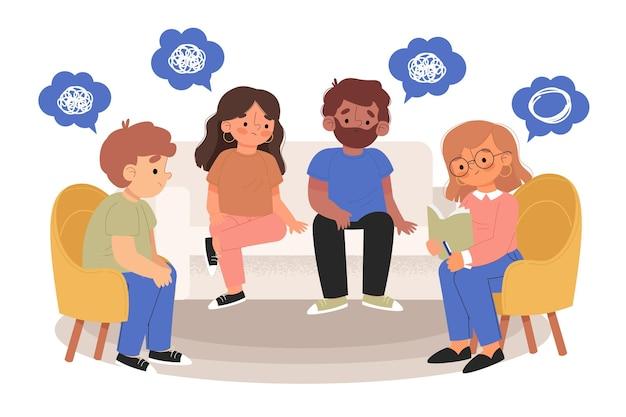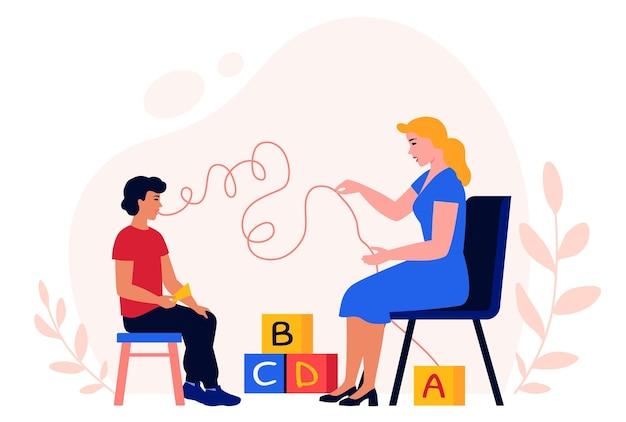Are you interested in exploring the world of counseling? Wondering about the various approaches and which one might be the best fit for you? In this blog post, we will dive into the concepts of directive counseling and non-directive counseling, shedding light on their similarities, differences, advantages, and disadvantages.
Counseling is a valuable process that aims to provide individuals with support, guidance, and a safe space to explore their thoughts and emotions. It can help individuals cope with personal challenges, improve their well-being, and enhance their overall quality of life. With numerous counseling approaches available, it’s essential to understand the nuances of each approach to make an informed decision.
So, whether you’re considering therapy for yourself or you’re simply curious about counseling techniques, read on to discover the differences between directive counseling and non-directive counseling and gain insight into which approach might be the most beneficial for you.

What is Directive Counseling and Non-Directive Counseling?
In the field of counseling, there are various approaches and techniques used to help individuals overcome their challenges and thrive in their lives. Two popular approaches are directive counseling and non-directive counseling. While their names may sound a bit intimidating, fear not! Let’s delve into these counseling styles and demystify them.
Understanding Directive Counseling
Directive counseling is like having a GPS system guiding you on a road trip. It involves a counselor taking an active role in leading the sessions and providing specific guidance and recommendations to the client. Picture it as a counselor who confidently grabs the wheel and navigates through the twists and turns of the counseling process.
During directive counseling, the counselor offers concrete solutions, strategies, and advice based on their expertise and assessment of the client’s situation. They may make recommendations, set goals, and even assign tasks or homework to enhance the client’s progress. It’s like having a knowledgeable co-pilot cheering you on and providing step-by-step instructions.
Embracing Non-Directive Counseling
On the other hand, non-directive counseling adopts a more laid-back, “go with the flow” approach. It empowers the client to take the wheel and choose their own destination. Instead of the firm steering of the counselor, non-directive counseling places the client in the driver’s seat, allowing them the freedom to explore their feelings, thoughts, and experiences.
In non-directive counseling, the counselor acts as a supportive passenger, offering a safe and non-judgmental space for the client to express themselves. Through active listening, empathy, and reflection, the counselor encourages the client to discover their own insights and solutions to their challenges. It’s like having a compassionate friend riding shotgun, there to listen and provide encouragement.
Comparing the Two Approaches
Now that we have a better understanding of directive and non-directive counseling, let’s examine their similarities and differences. Directive counseling provides specific guidance and advice, while non-directive counseling emphasizes self-exploration and self-discovery. It’s akin to a structured road trip versus a leisurely Sunday drive.
Both approaches have their merits and are suitable for different individuals and situations. Directive counseling is particularly beneficial when clients are seeking practical solutions and prefer a clear roadmap to follow. Non-directive counseling, on the flip side, is ideal for those who appreciate the freedom to explore their emotions and thoughts, fostering personal growth and self-awareness.
The Beauty of Counseling Approaches
In the vast realm of counseling, directive and non-directive approaches offer distinct benefits and can be effective in supporting individuals on their journeys. Whether you prefer a counselor to take the wheel or you desire the freedom to navigate yourself, there’s a counseling approach that aligns with your needs.
Remember, in the counseling realm, it’s all about finding what works best for you. So buckle up, embrace the counseling approach that resonates with you, and get ready for a transformative ride towards personal growth and fulfillment. Enjoy the journey!

FAQ: What is Directive Counselling and Non-Directive Counselling?
Your burning questions, answered with a smile!
What’s the deal with all these counseling approaches
Counseling is a vast field with different approaches tailored to the unique needs of individuals. Two popular approaches you might have come across are Directive Counselling and Non-Directive Counselling. Let’s dive in and break them down for you!
What exactly is Directive Counselling
Directive Counselling, sometimes known as “the captain of the ship” approach, is when the therapist takes the helm and provides guidance and suggestions to the client. Think of it as a roadmap to help the client navigate their challenges.
Tell me more! What are the advantages and disadvantages of Directive Counselling
Advantages:
1. Clear direction: Directive Counselling provides specific guidance, allowing clients to make tangible progress.
2. Efficiency: With a focused approach, clients may see faster results.
Disadvantages:
1. Lack of autonomy: Some individuals might feel that their own needs and perspectives are not fully acknowledged.
2. Dependency: There is a risk of over-reliance on the therapist, hindering clients from developing their problem-solving skills independently.
And what about Non-Directive Counselling? Is it similar
Ah, Non-Directive Counselling, also known as “go with the flow” approach, takes a different approach by allowing the client to take the driver’s seat. The therapist acts as a supportive guide rather than directing the conversation.
Got it! Which counseling approach rules them all
While both approaches have their merits, the “best” approach depends on the individual and their unique circumstances. Some clients may thrive with the clear structure of Directive Counselling, while others may prefer the freedom of Non-Directive Counselling. It’s all about finding the right fit!
What’s another word for Counselling
Ah, the synonyms game! Counselling can also be referred to as therapy, guidance, or even a heart-to-heart chat with a trusted professional.
Are there any downsides to Directive Counselling
Of course, no counseling approach is perfect! Some potential disadvantages of Directive Counselling include:
1. Limited exploration: The focus on specific guidance may limit the exploration of deeper issues.
2. Overwhelming advice: Too much advice can leave clients feeling overwhelmed or suffocated by the therapist’s suggestions.
Okay, let’s dig deeper! How many types of counseling are there
You’re in for a treat because there are various types of counseling! Some major branches include:
1. Individual counseling
2. Group counseling
3. Family counseling
4. Couples counseling
5. Career counseling
6. Substance abuse counseling, and many more!
Who’s the father of Counselling
Drumroll, please! The father of Counselling is none other than Carl Rogers. His groundbreaking work in humanistic psychology and person-centered therapy laid the foundation for modern counseling approaches.
So, what is Directive Counselling all about
Directive Counselling is all about the therapist taking charge! It involves the therapist providing guidance, strategies, and specific advice to help the client navigate their challenges and reach their goals.
Can you give me a step-by-step breakdown of the counseling process
Certainly! The counseling process typically involves six stages, including:
1. Building rapport and establishing trust
2. Assessing the client’s needs and concerns
3. Setting goals collaboratively
4. Developing an action plan
5. Implementing strategies and interventions
6. Evaluating progress and making adjustments as needed.
What about the four stages of the counseling process
Ah, an alternative breakdown! The four stages of the counseling process are typically:
1. Initial disclosure: The client opens up about their challenges or concerns.
2. Exploring problems: The client and therapist delve deeper into the underlying issues.
3. Goal-setting: Collaboratively setting objectives and outcomes to work towards.
4. Closing the session: Wrapping up the session with a summary and plan for next time.
How do you go about Directive Counselling
In Directive Counselling, the therapist takes several steps to provide effective guidance:
1. Identifying the client’s concerns and goals
2. Offering specific suggestions and strategies
3. Facilitating problem-solving and decision-making processes
4. Monitoring progress and adapting the approach as needed
5. Ensuring ongoing support and encouragement.
Can you share some common principles of Counselling
Absolutely! Here are six common principles that underpin the counseling process:
1. Confidentiality: Trust and privacy are paramount.
2. Empathy: Understanding and compassion without judgment.
3. Non-judgmental attitude: Creating a safe space for open dialogue.
4. Active listening: Truly hearing and understanding the client’s experiences.
5. Respect: Acknowledging and valuing the client’s autonomy and individuality.
6. Ethical practice: Following established standards and guidelines.
What’s the difference between a therapist and a Counsellor
Aha! While the terms can sometimes be used interchangeably, there is a subtle distinction. Generally, a therapist is a broader term that encompasses various professionals working in mental health, such as psychologists and psychiatrists. On the other hand, a Counsellor typically refers to a professional who provides counseling services, specifically focusing on talk therapy and emotional support.
References:
- What is directive counseling?
- Theories and Approaches in Counseling
- What’s the difference between counseling, psychotherapy, and talk therapy?
